Two isosceles prism of prism angle A and refractive index μ are placed with their bases touching each other. This system can act as a crude converging lens. The focal length of the lens for A=10∘,μ=1.5 and a ray of light incident on a prims at a height of 1 cm from its base, is approximately. 
11.5 cm
23.0cm
zero
5.75cm
The correct Answer is:A
For small angles tanδ=hf
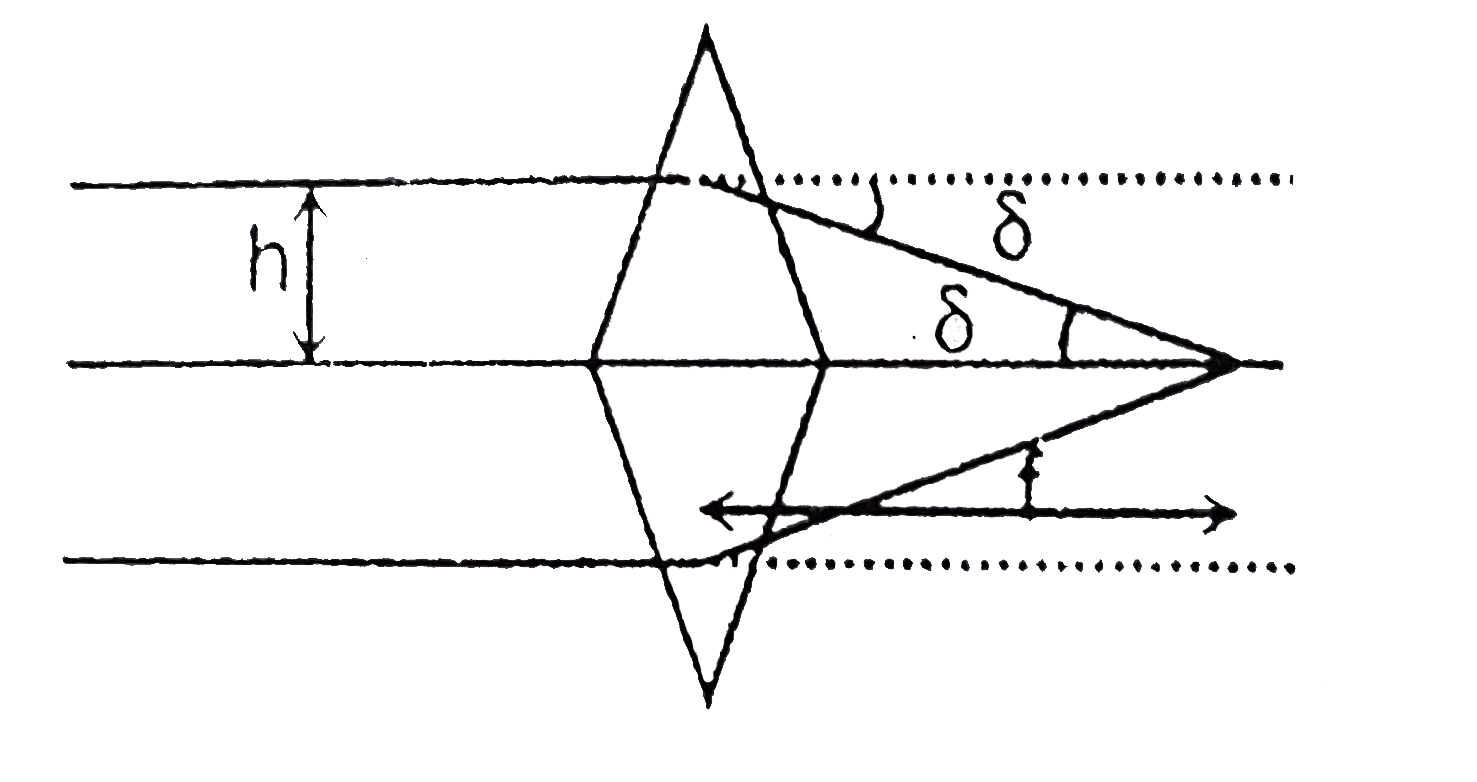
Also tanδ=δ=(μ−1)A
h(μ−1)A=f
100=π18 radian
f=1×180.5×3.14=11.5cm
Topper's Solved these Questions
Similar Questions
Two identical thin isosceles prisms of refracting angle A and refractive index μ are placed with their bases touching each other and this system can collectively act as a crude converging lens. A parallel beam of light is incident on this system as shown in Figure. Find the focal length of this so called converging lens.
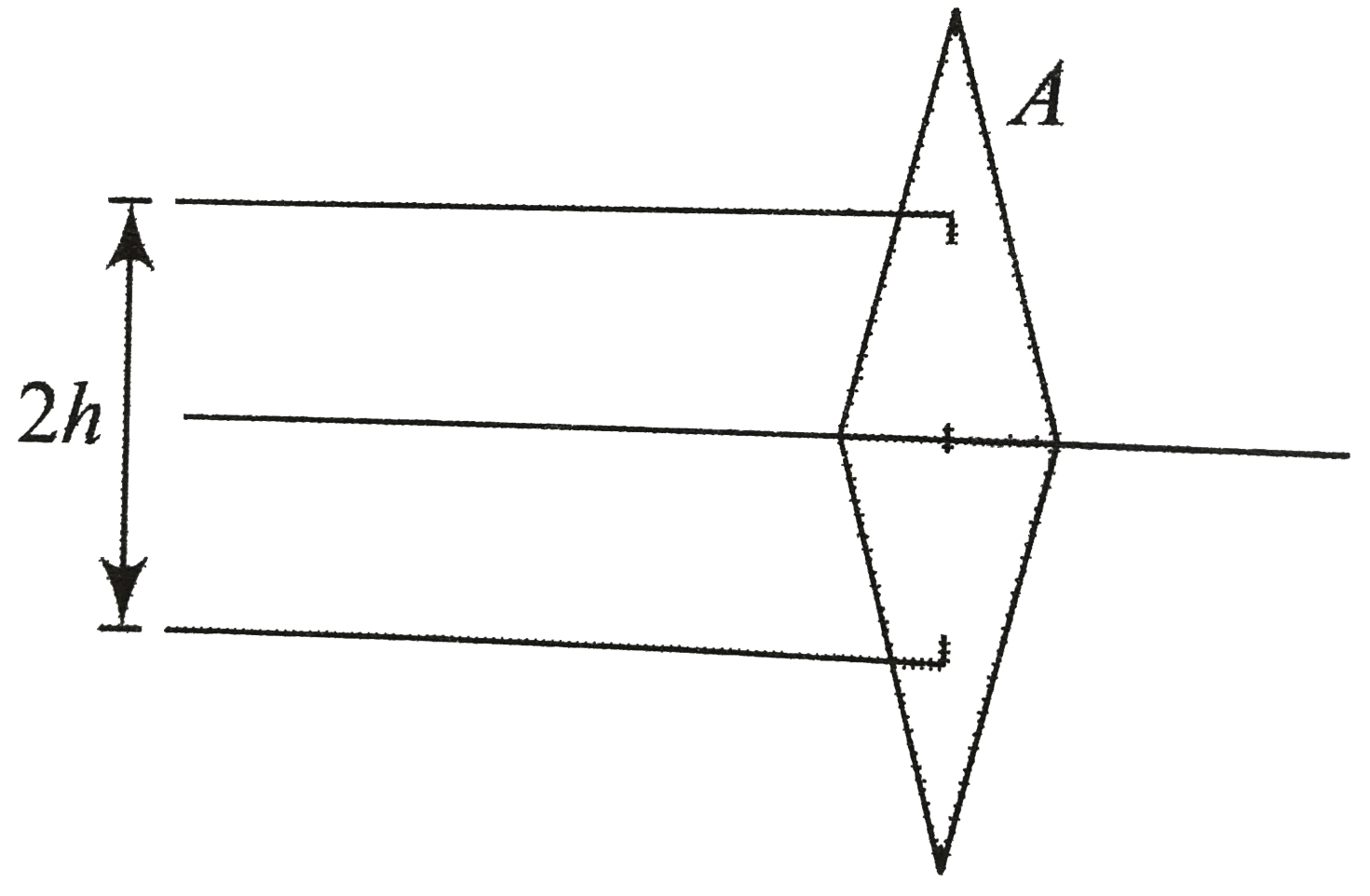 View Solution
View SolutionTwo identical thin isosceles prims of refracting angle θ and refractive index μ are placed with their bases touching each other. A parallel beam , of width 2b, is incident on this system , as shown. The distance of the point of convergence from the prism is
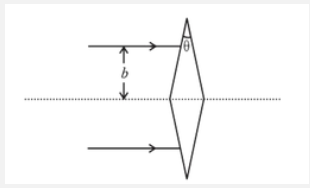 View Solution
View Solution
Knowledge Check
- Question 1 - Select One
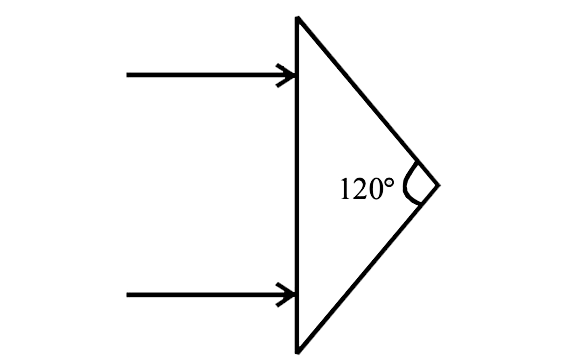
An isosceles prism of angle 120degree has a refractive index 1.44. Two parallel monochromatic rays enter the prism parallel to each other in air as shown. The rays emerge from the opposite facesAare parallel to each otherBare divergingCmake an angle 2[sin−1(0.72)−30degree] with each otherDmake an angle 2sin−1(0.72) with each other - Question 2 - Select One
The radius of curvature of each surface of a lens is 40 cm. Its refractive index is 1.5. The focal length of lens will be
A40 cmB20 cmC80 cmD30 cm - Question 3 - Select One
The angle of prism is 60∘ and its refractive index is 1.5. There will be no emergent light if the angle of incidence on the first face is
Aequal to 30∘Bless than 27∘Cmore than 30∘Dequal to 60∘
A thin glass lens of refractive index μ2=1.5 behaves as an interface between two media of refractive indices μ1=1.4andμ3=1.6 respectively. Determine the focal length of the lens for the shown arrangement of radius of curvature of both surfaces 20cm.
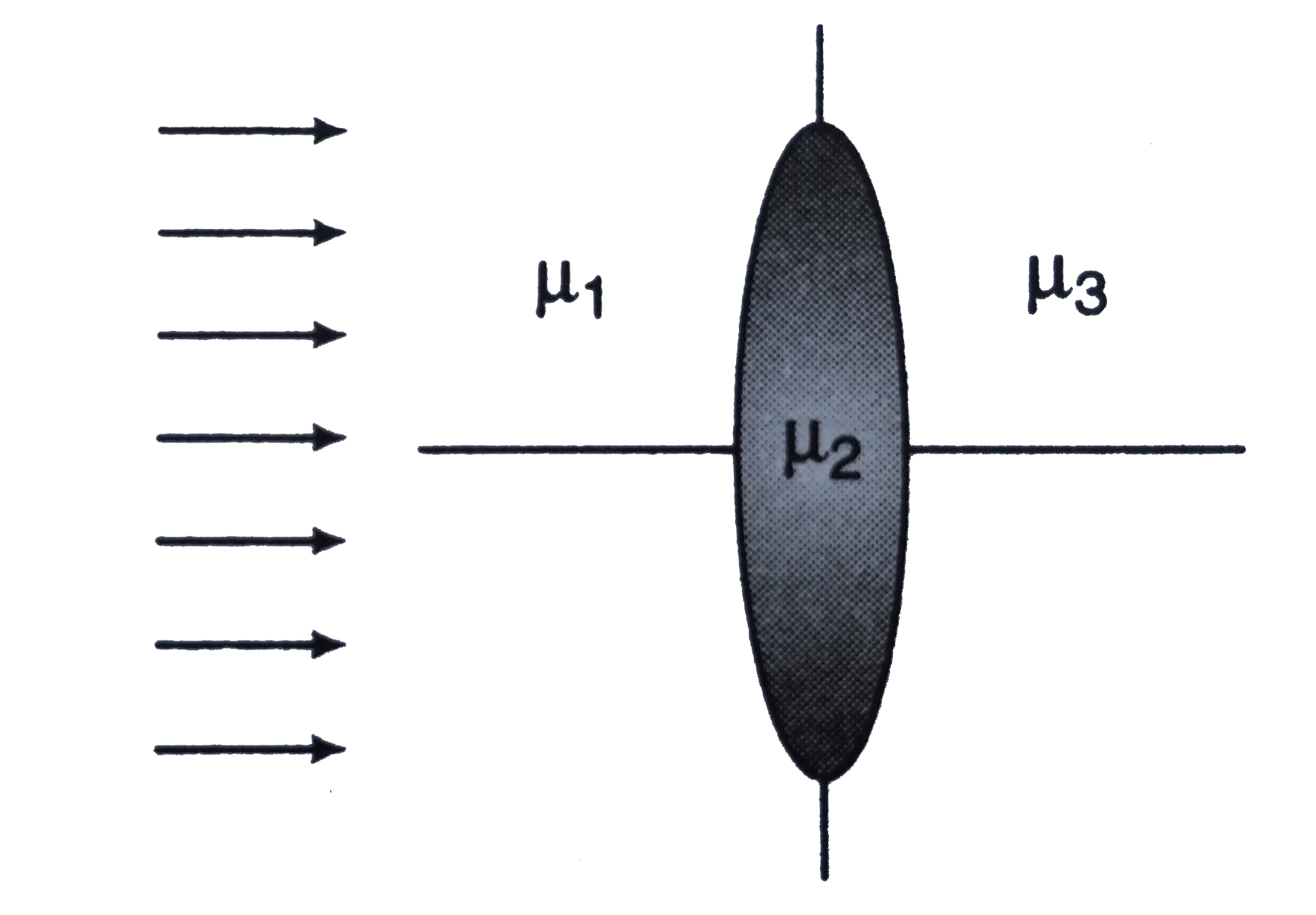 View Solution
View SolutionA thin converging lens of refractive index 1.5 has a focal power of 5 D. When this lens is immersed in a liquid, it acts as a diverging lens of focal length 100 cm. The refractive index of the liquid is
View SolutionThe base of a prism is a right angled triangle, the length of whose hypotenuse is 10 cm. If the lateral surface area of the prism be 384 cm2 and its height be 16 cm. The other two sides of its base is
View SolutionRadii of curvature of a converging lens are in the ratio 1:2. Its focal length is 6cm and refractive index is 1.5. Then its radii of curvature are
View SolutionA glass prism has a refractive angle of 90∘ and a refractive index of 1.5. A ray is incident at an angle of 30∘. The ray emerges from an adjacent face at an angle of
View Solution
